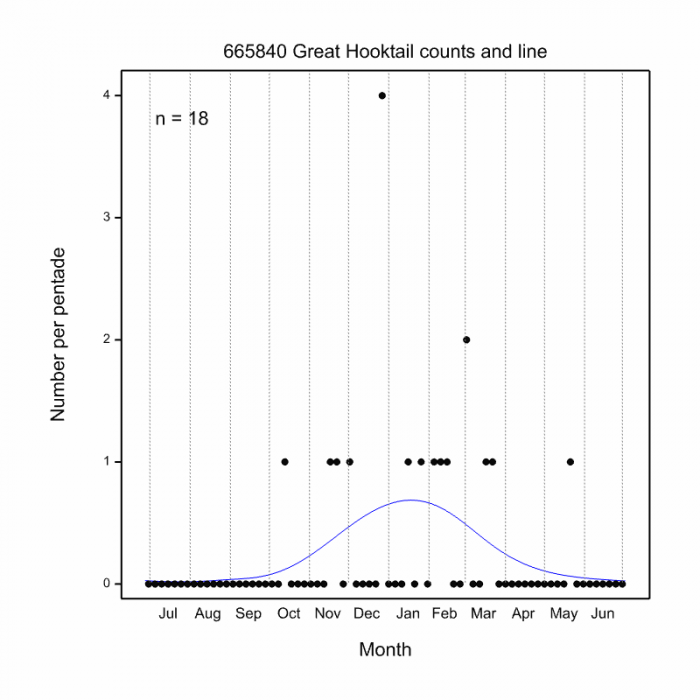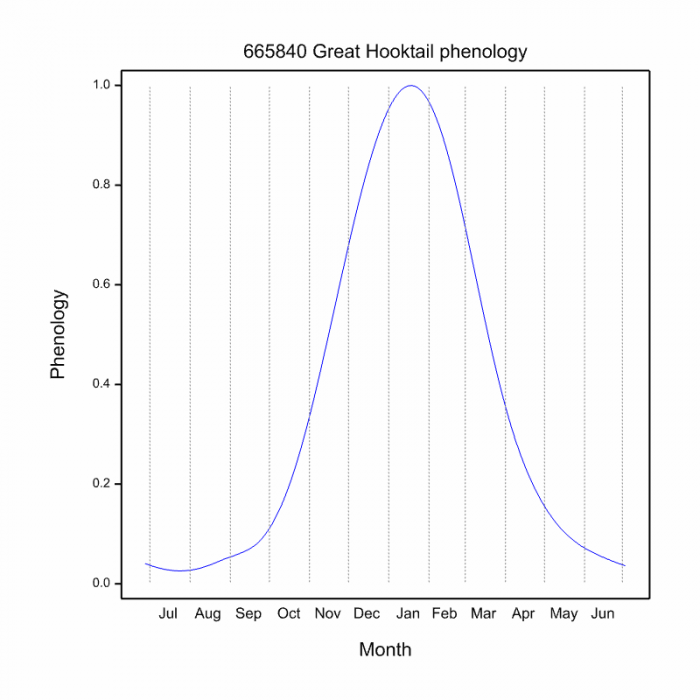View the above photo Record (by Wil Leurs) in OdonataMAP here.
Find the Great Hooktail in the FBIS database (Freshwater Biodiversity Information System) here.
Family Gomphidae
Paragomphus magnus – GREAT HOOKTAIL
Identification
Large size
Length up to 58mm.
The Great Hooktail is a large and striking species. The combination of its large size, distinctive colouration and lack of foliations on the abdomen render this species unmistakable.
The sexes are similar but females lack the strongly hooked claspers of the male. Females are slightly duller, having a yellow-green and black thorax, rather than the bright green and black of the males.
Click here for more details on identification of the Great Hooktail.
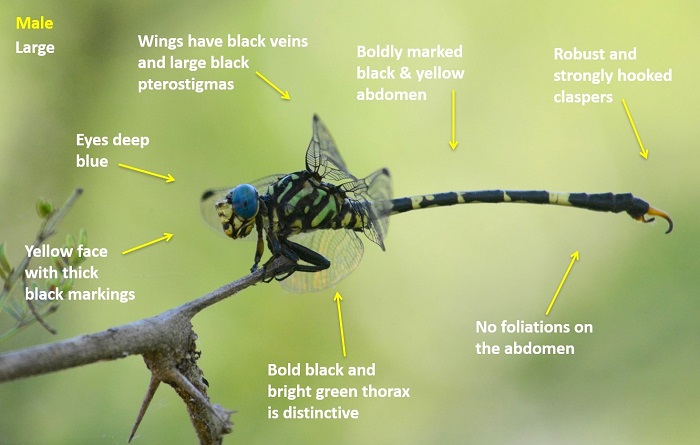
Pongola River, KwaZulu-Natal
Photo by Ryan Tippett

Mkuze River, KwaZulu-Natal
Photo by Ryan Tippett
Habitat
Inhabits savanna rivers of the Lowveld and Northern KwaZulu-Natal. Prefers rocky, flowing rivers with rapids and well wooded banks lined by trees and reeds.

Photo by Ryan Tippett
Behaviour
Not much is known about the Great Hooktail. Mostly perches on trees both next to the water and in woodland above the riverbank. Often sits fairly high up. Also known to sit on the tips of reeds and sometimes on rocks near the water. Females have been observed depositing their eggs at rocky river sections with shallow, fast flowing water. It hunts from a perch and has a fast, powerful flight.
Most active from October to April. See Phenology below.
Status and Conservation
Paragomphus magnus is an uncommon and localised species. It was first recorded in South Africa as recently as 2012. It is listed as of Least Concern in the IUCN Red List of Threatened Species.
Distribution
Very thinly distributed from northern South Africa, Zimbabwe and Mozambique up to Malawi, Tanzania and Kenya.
Below is a map showing the distribution of records for South Africa for the Great Hooktail. Taken from the OdonataMAP database as at February 2020.
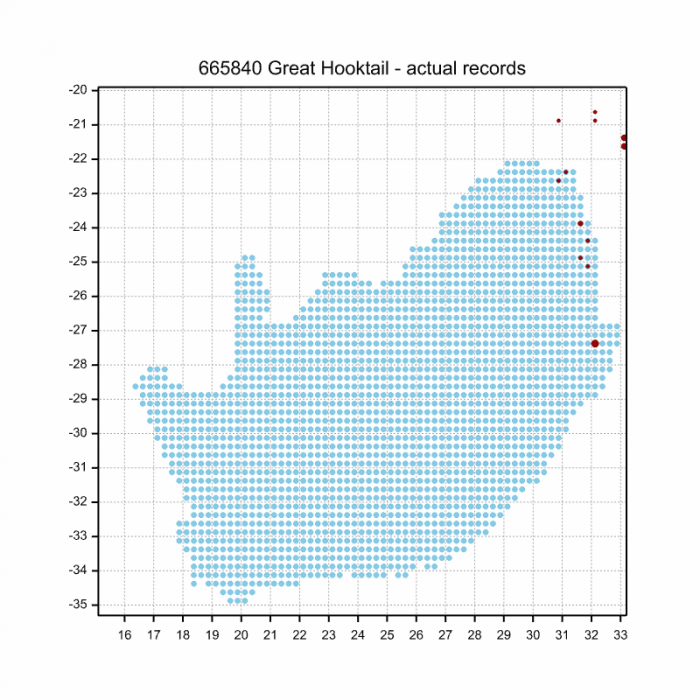
The next map below is an imputed map, produced by an interpolation algorithm, which attempts to generate a full distribution map from the partial information in the map above. This map will be improved by the submission of records to the OdonataMAP section of the Virtual Museum.
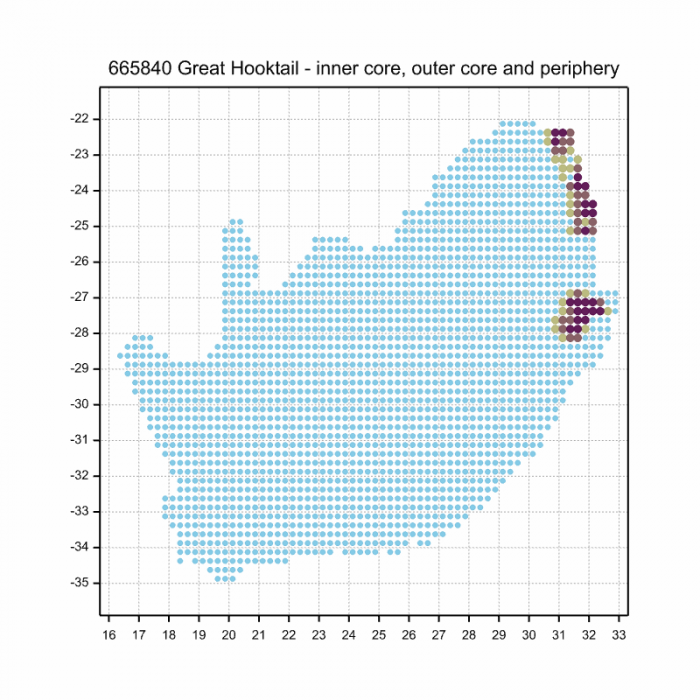
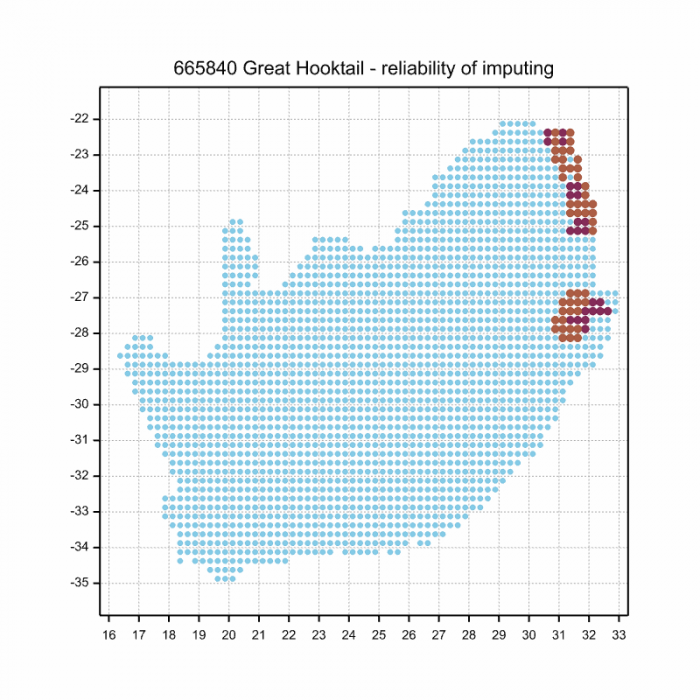
Ultimately, we will produce a series of maps for all the odonata species in the region. The current algorithm is a new algorithm. The objective is mainly to produce “smoothed” maps that could go into a field guide for odonata. This basic version of the algorithm (as mapped above) does not make use of “explanatory variables” (e.g. altitude, terrain roughness, presence of freshwater — we will be producing maps that take these variables into account soon). Currently, it only makes use of the OdonataMAP records for the species being mapped, as well as all the other records of all other species. The basic maps are “optimistic” and will generally show ranges to be larger than what they probably are.
These maps use the data in the OdonataMAP section of the Virtual Museum, and also the database assembled by the previous JRS funded project, which was led by Professor Michael Samways and Dr KD Dijkstra.
Phenology
